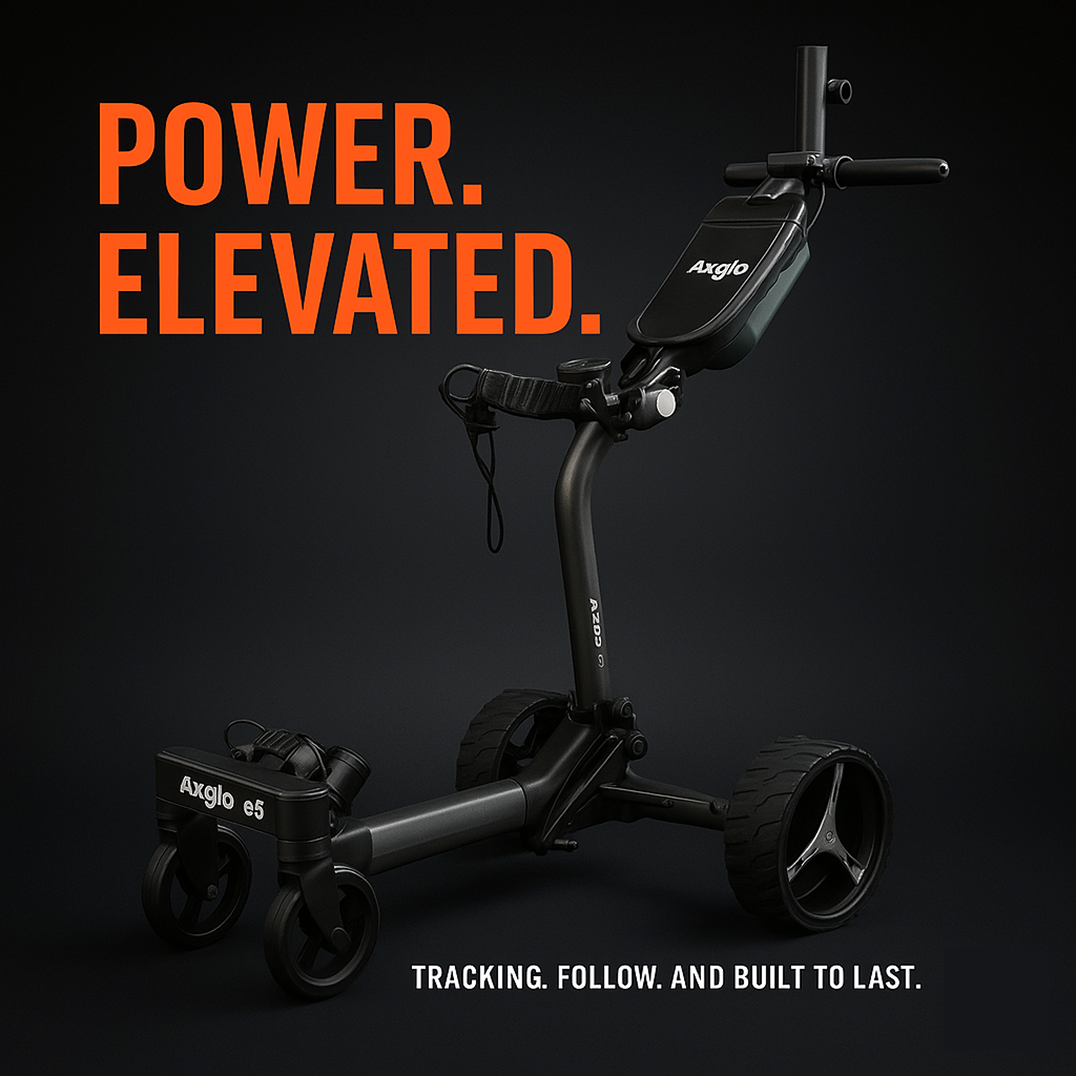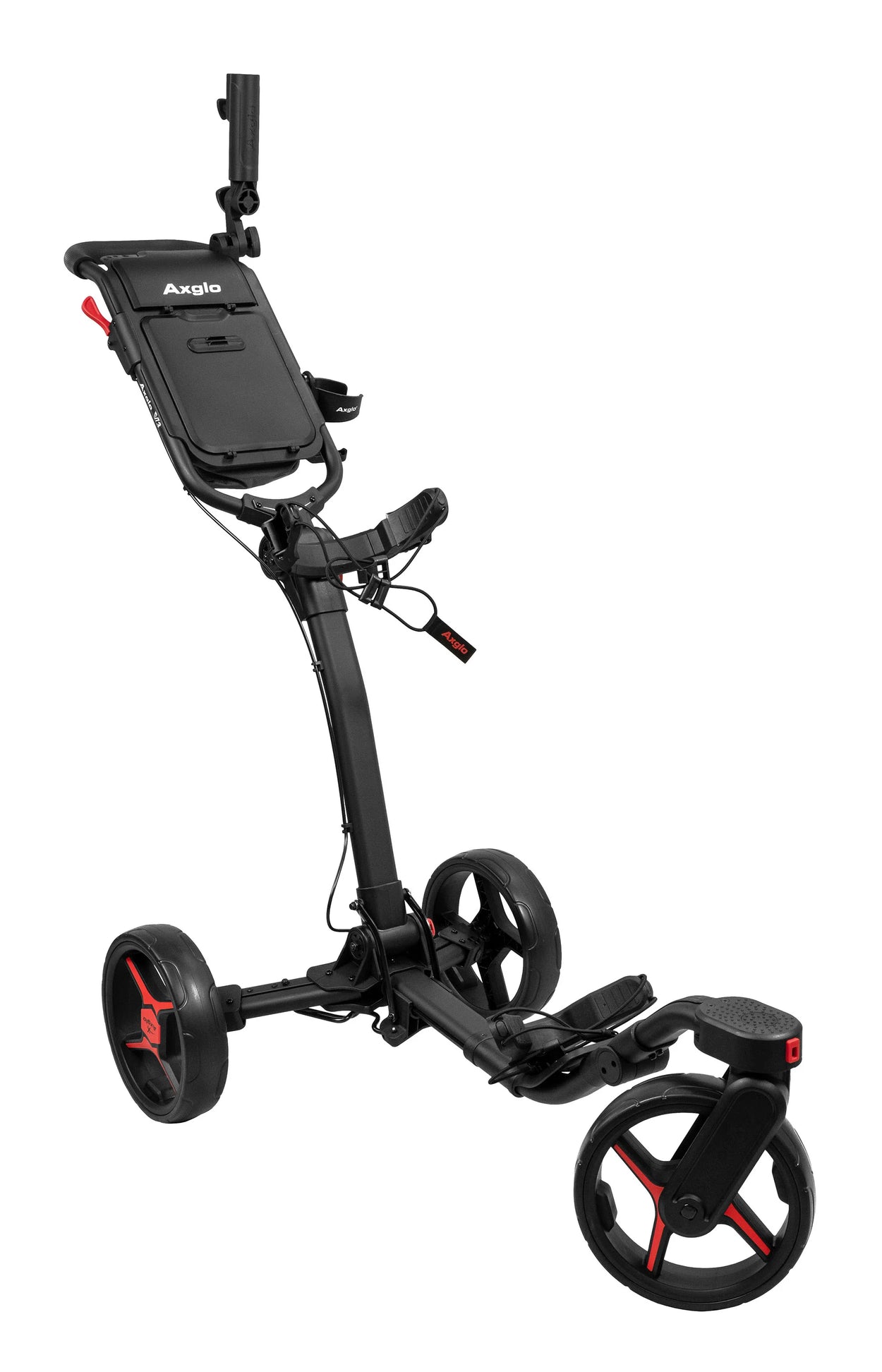ARTICLE
Ultimate Buying Guide for Golf Cart Batteries: Cost, Club Car, and More
Chris Lang
Read Time: 26 minutes

Deciding on a golf cart battery can feel like navigating through a maze. In this handbook, we slice through the perplexity to focus on the essentials—varieties, expenses, and strategies for extending their lifespan. We'll break down the differences between lead-acid, AGM, and lithium-ion batteries so you can pick what's best for your cart.
In this segment, you'll become savvy on the elements influencing prices while mastering strategies to minimize expenses as time progresses. Plus, we've got tips on extending battery life that are easy to follow. By the end of this read, choosing and caring for your golf cart battery won't just be simple; it’ll save you money too.
Understanding Golf Cart Battery Types

Golf cart batteries come mainly in three types: lead-acid, AGM (Absorbent Glass Mat), and lithium-ion. Lead-acid batteries are the traditional choice, offering a lower initial cost. AGM batteries, a type of lead-acid battery, provide improved reliability and require less maintenance. Lithium-ion batteries are the newest, offering the best efficiency, weight, and longevity advantages.
Lead-Acid Batteries
For years, electric golf carts have relied on the traditional choice of lead-acid batteries for their energy needs. They're favored because they strike a balance between being cost-effective and widely accessible. However, their upkeep necessitates frequent water refills and meticulous cleaning of the connectors to ward off rust.
Handling this variety necessitates caution because of its heaviness and the risk of acid leaks. Even with their downsides, the initial lower price point is appealing to those eager for cost-effective solutions right off the bat.
AGM Batteries
Absorbent Glass Mat (AGM) technology represents a step up in battery evolution with its maintenance-free design. AGMs are sealed units that don't require the periodic water additions their lead-acid cousins need.
Designed to withstand the bumps and shakes of uneven landscapes, these batteries are perfectly suited for navigating the rugged paths of golf courses or exploring winding outdoor trails. Though they come at a higher initial price than lead-acid batteries, the reduced upkeep can make AGMs more cost-effective over time.
Lithium-Ion Batteries
In the evolving world of golf carts, lithium-ion batteries are emerging as the go-to for enthusiasts seeking enhanced durability and power. They offer significant advantages such as lighter weight, faster charging times, and no memory effect which means you can charge them whenever convenient without worrying about diminishing capacity.
Beyond performance benefits, lithium-ion's efficiency and longer lifespan often justify their higher price tag by offering savings in long-term replacement costs compared to other types of batteries used in golf carts today.
Selecting the right battery type depends largely on your specific needs—be it budget constraints with lead-acids; convenience through AGM’s minimal maintenance; or investing in lithium-ion's superior performance for extensive use cases. Each has its place depending on individual priorities like initial investment versus ongoing care commitments or total ownership costs over time. Understanding the pros and cons: lithium batteries can provide deeper insights into whether lithium-ion batteries align with your specific needs, balancing initial investment, ongoing care, and total ownership costs over time.
Factors Influencing Golf Cart Battery Costs
The cost of golf cart batteries is influenced by their type, capacity, and brand. Lithium-ion batteries are typically the most expensive due to their long life and high performance. The battery's capacity, measured in ampere-hours (Ah), also affects price—the higher the capacity, the higher the cost. Brand reputation and warranty offerings can further impact price. Additionally, exploring solutions for golf cart slow with new batteries can offer insights into maximizing your golf cart's efficiency and addressing any issues related to underperformance despite having new batteries.
Technology and Capacity
The type of technology behind a golf cart battery can significantly affect its price. For instance, lead-acid batteries have been the go-to choice for years due to their cost-effectiveness but require more maintenance. On the flip side, lithium-ion batteries offer longevity and better performance with less upkeep but at a higher initial cost. It's like choosing between an old-school flip phone or the latest smartphone; each has its pros and cons in terms of upfront costs and features.
The size of the battery significantly influences its cost, akin to how a larger container requires more coins to fill. Higher capacity batteries mean longer play times on the course without needing a recharge, much like having a larger gas tank for extended road trips. Naturally, opting for more 'miles' means shelling out extra bucks upfront.
Brand Reputation and Warranty
The brand name attached to your golf cart battery isn't just about flaunting logo stickers on your ride; it's about reliability backed by reputation—a factor that often influences pricing. Top-tier brands typically command higher prices because they promise quality assurance through extensive testing processes you might not find with generic options. Consumer Reports adeptly sheds light on the notion that our faith in brands (and how deep we're willing to dig into our pockets) is significantly shaped by their reputation.
A solid warranty is akin to having an insurance policy on your purchase—it offers peace of mind knowing you're covered if things go south unexpectedly. Battery University explains warranties are particularly pivotal in mitigating risks associated with pricier models, ensuring buyers get both value and protection from their investment.
Calculating the Total Cost of Ownership
The true cost of owning a golf cart battery goes beyond its sticker price. In the debate between lead-acid and lithium batteries, it's not merely about buying energy but rather putting your money into durability, effectiveness, and serenity.
Lead-Acid Batteries
Traditionally favored for their affordability, lead-acid batteries come with hidden costs that can add up over time. They typically need replacement every 3 to 5 years due to their shorter lifespan. Additionally, to keep them running smoothly and stave off rusting, you gotta stay on top of routine upkeep like refilling the water levels and scrubbing down those connectors.
Caring for these units isn't merely a matter of exertion; it equally entails incurring extra costs. From distilled water to protective gear and tools for safe handling, these small purchases contribute significantly to the overall cost of ownership.
AGM Batteries
Absorbent Glass Mat (AGM) technology offers a step up from traditional lead-acid batteries by eliminating the need for water refills and reducing maintenance efforts considerably. This advantage makes AGM an attractive option despite its higher upfront cost compared to standard lead-acid options.
The cutback in maintenance not only conserves funds but also spares time, diminishing the expenditure on upkeep resources or expert assistance throughout the battery's lifespan.
Lithium-Ion Batteries
Lithium-ion stands out as the premium choice among battery operated golf cart owners seeking long-term value. These batteries boast superior longevity with life spans reaching up to 10 years under proper care—a stark contrast against other types available on Big Horn Golfer.
Besides lasting longer than alternatives, lithium-ion requires minimal-to-no ongoing maintenance throughout its lifecycle which dramatically lowers total ownership costs despite their initial purchase price being higher than both AGM or Lead-Acid counterparts.
Maximizing Golf Cart Battery Life

To maximize the life of your golf cart battery, regular maintenance is crucial. For lead-acid batteries, ensure proper water levels and clean terminals to prevent corrosion. Avoid deep discharging batteries and ensure they are fully charged after use. For all battery types, storing them in a cool, dry place and using a smart charger can extend their lifespan significantly.
Charging Practices
To ensure your golf cart battery thrives for as long as possible, it's essential to adopt and stick to proper charging routines. It's tempting to give it a quick charge between rounds, but this can actually shorten its life. Instead, fully charge your battery after each use, even if you haven't drained it completely. By steering clear of this tactic, you sidestep the dreaded memory effect plaguing certain batteries, ultimately preserving their longevity and vitality.
Avoid leaving your golf cart plugged in all the time as well. Overcharging can be just as harmful as undercharging because it leads to overheating and water loss in lead-acid batteries. Investing in a smart charger that turns off when the battery is full could save you money and headaches down the road.
Regular Maintenance Routines

Routine maintenance isn't glamorous but skipping it could lead to bigger problems later on. For those with lead-acid batteries, checking and maintaining water levels is key; distilled water should be used to fill cells after charging, not before—to prevent overflow or dilution of electrolytes.
Cleaning terminals regularly also prevents corrosion build-up which can impede power flow—making sure connections are tight but not overly so protects against short circuits or damage from vibration during rides across rough terrains.
Incorporating these practices into your routine might seem like extra work now but consider them an investment towards fewer replacements and more uninterrupted playtime on the green—or wherever your golf cart takes you.
Choosing the Right Battery for Your Club Car
To kick things off, consider what makes your cart tick. Is it primarily used for leisurely rounds on the golf course or does it double as a workhorse around your property? This will dictate whether you lean towards batteries with long life cycles or those that offer bursts of power when needed. Additionally, ponder whether the battery you're considering aligns with your cart's make and model specifications. Not all batteries fit all carts due to size constraints or voltage requirements.
Battery options can be overwhelming but narrowing down by technology type is a great place to start. For instance, lead-acid batteries have been powering carts since forever because they're cost-effective and reliable if maintained properly. On the flip side, lithium-ion variants are gaining traction in modern fleets thanks to their lighter weight and zero maintenance appeal.
Battery options for Club Car golf carts are overviewed.
The next step is evaluating specific brands within these categories based on reputation and warranty offers—a good warranty can save you from unexpected costs down the road. Price also plays into this decision; remember that opting for cheaper upfront costs could mean more frequent replacements over time. Consider how each option stacks up against your list of criteria—model compatibility should always be at top—but don't overlook longer-term considerations such as potential savings on maintenance with certain technologies or warranties offered by reputable manufacturers.
Environmental Impact and Sustainability
The environmental impact of golf cart batteries varies by type. Lead-acid batteries, while recyclable, can pose significant environmental hazards if not properly disposed of due to their lead and acid content. Lithium-ion batteries have a smaller environmental footprint and are more efficient, but sourcing lithium and recycling these batteries also presents challenges. Choosing batteries with a longer lifespan and supporting recycling programs can mitigate some environmental impacts. Additionally, choosing the best electric golf scooter can further align with environmental sustainability efforts, offering an eco-friendly alternative for personal transportation on the golf course.
Lead-Acid Batteries
For years, the reliable lead-acid battery has been the go-to power source for golf carts, despite its considerable ecological toll. While they save money upfront, their environmental impact is notable due to the harmful materials they contain. Crafting these power sources entails the use of dangerous substances like lead and sulfuric acid, posing risks if they're not correctly discarded. However, they are highly recyclable, with the majority of their components being reused in new batteries.
To make things greener on the course, it's vital to participate in responsible recycling programs. For example, following EPA standards for battery recycling is crucial to prevent these potentially hazardous substances from damaging the Earth.
AGM Batteries

Absorbent Glass Mat (AGM) technology offers a more environmentally friendly alternative to traditional lead-acid options. Sealed AGM batteries minimize acid spill hazards, enhancing safety for individuals and safeguarding our planet. Their streamlined structure ensures minimal energy dissipation throughout charging and discharging phases, benefitting both your wallet and our planet in a significant manner.
Lithium-Ion Batteries
Lithium-ion batteries stand out as the eco-champion among golf cart power sources due to their longer lifespan and higher efficiency compared to other types on the market. They boast a smaller carbon footprint over their life cycle because they last longer—meaning fewer replacements—and require less energy to charge fully.
Adopting lithium-ion tech not only mirrors our commitment to a greener planet by minimizing waste but also ensures the preservation of valuable resources. Grasping the mechanics behind lithium-ion batteries sheds light on their significance as a leap towards greener modes of transport.
Signs It's Time to Replace Your Golf Cart Battery
Imagine this: you're ready for a peaceful day on the course, but your golf cart has other plans. If you've been noticing that your rides are getting shorter or the power seems lackluster, it might be time for a battery check-up. Recognizing the right moment to swap out your golf cart's battery can shield you from sudden stops and preserve the pleasure of your game.
Diminished Capacity
If your golf cart isn't covering as much ground as it used to on a single charge, take note. This is often the first sign of diminished capacity, indicating that the battery can no longer hold as much energy as before. While all batteries degrade over time due to chemical reactions within them, significant drops in performance signal it's replacement time.
A helpful way to test battery capacity involves fully charging your golf cart and seeing how far it goes under normal conditions until it needs recharging again.
Longer Charging Times
Besides just not going the distance like they used to, aging batteries also tend to hog more plug-in time. Initially subtle, these extended charging periods grow increasingly inconvenient and indicate declining efficiency. When what used to be overnight charges turn into multi-day affairs without delivering improved performance – consider shopping around for replacements.
Physical Damage
Last but definitely not least: keep an eye out for any visible signs of damage such as swelling, leaks, or cracks on the battery itself; these physical symptoms could lead not only to decreased functionality but potential safety hazards too. Swollen or leaking batteries pose serious risks, both environmental and personal - if you spot these issues don’t hesitate replacing immediately.
Selecting the Right Charger for Your Golf Cart Battery
Finding the perfect charger for your golf cart battery doesn't have to feel like solving a Rubik's Cube. Figuring out the right charger for your golf cart's battery is really about recognizing what kind of battery it is and grasping how various chargers can either prolong or shorten its life.
Lead-Acid Batteries
If you're cruising around with a lead-acid battery, you've got the OG of power sources under your seat. These power cells deliver unparalleled value, though they require a bit of tender care in exchange. A smart charger that can handle their maintenance cycle is key here because it'll keep them hydrated without overdoing it. Overcharging is like giving these batteries too much coffee—it makes them jittery and shortens their life.
AGM Batteries
For those who upgraded to Absorbent Glass Mat (AGM) technology, congrats on dodging regular maintenance chores. AGM batteries don't get thirsty like their lead-acid cousins, so they need a charger that speaks their language—specifically one tailored to manage their sealed design efficiently. This means finding a charger that knows when to say enough’s enough, preventing overcharge which can be as harmful as letting your phone charge overnight every night.
Lithium-Ion Batteries
Welcome to the future if you’re rolling with lithium-ion. Lightweight and packing more punch per pound than heavyweight contenders in the battery world—they require precision from their charging partner. Opting for a lithium-specific charger isn’t just good practice; it’s essential since these high-tech units demand specific voltage and current levels to stay fit as fiddles without turning into fire hazards.
In each case, matching your golf cart's heart with its ideal charging companion ensures not only longer rides but also fewer headaches down the road. Big Horn Golfer presents a diverse collection of chargers, meticulously tailored for different golf cart battery needs.
Conclusion
Choosing the right golf cart battery isn't a maze anymore. Now that you're up to speed, having grasped the variety of models and becoming savvy with their prices, navigating through your options has become second nature. How much does a golf cart battery cost? It varies, but now you know why and how to manage it.
Start with knowing your needs, whether it's lead-acid, AGM or lithium-ion. Ensure you balance considerations such as the tech and power capabilities with the cost. Always bear in mind that splurging a bit more on a superior battery can enhance its longevity, ensuring your expenses are minimized not only initially but throughout its lifecycle with the upkeep advice we've imparted, keeping you swinging smoothly on the course.
You'll keep those costs down not just at purchase but over time with proper care and maintenance tips we shared. This way, your golf game stays uninterrupted on the green.
In essence: Pick wisely based on need and budget; take good care of what powers your ride; enjoy more rounds of golf without hassle or high expense.
Q: What factors determine the cost of golf cart batteries?
A: The cost of golf cart batteries may vary depending on the type, brand, and capacity of the battery. Lithium-ion golf cart batteries tend to be more expensive than standard lead-acid batteries.
Q: How long do golf cart batteries typically last?
A: Golf cart batteries can last anywhere from 4 to 7 years depending on the type, usage, and maintenance. Regular maintenance and proper charging can help extend the lifespan of the batteries.
Q: What type of battery is recommended for a new golf cart?
A: Depending on the type of golf cart you have and your specific needs, lithium golf cart batteries or flooded lead-acid batteries may be recommended. It is important to consider factors such as cost, lifespan, and performance when choosing a battery for your new golf cart.
Q: What should I consider when buying new golf cart batteries?
A: When purchasing new golf cart batteries, consider factors such as the type of battery that best suits your needs, the cost of the batteries, the lifespan of the batteries, and any specific requirements your golf cart may have for battery replacement.
Q: How do I know when my golf cart batteries need to be replaced?
A: Signs that your golf cart batteries may need to be replaced include decreased performance, slow charging, or the batteries not holding a charge as long as they used to. It is recommended to regularly check the condition of your batteries to ensure optimal performance.
Q: What are the different types of golf cart batteries available in the market?
A: Some of the common types of golf cart batteries available include standard lead-acid batteries, lithium-ion golf cart batteries, and flooded lead-acid batteries. Each type has its own advantages and considerations based on cost, performance, and maintenance.
Q: How many batteries does a golf cart typically need?
A: Most golf carts require multiple batteries to operate, usually ranging from 4 to 6 batteries depending on the voltage of the system. A common setup is a 48v system that may require 4 12v batteries to power the cart.
Articles
More Articles

Backyard DIY Golf Net Setup: The Complete Guide to Building Your Home Practice Area

Best Golf Net for Home: Find Your Perfect Practice Net for Golf Hitting














